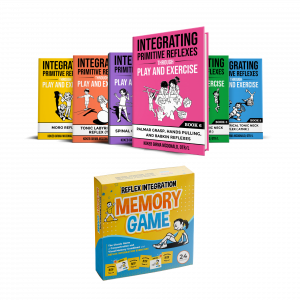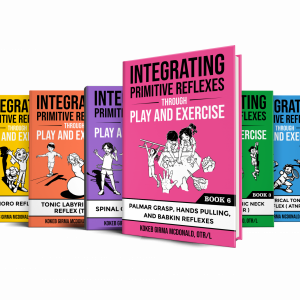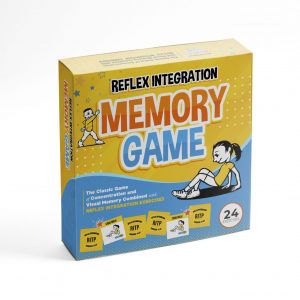The Reflex Integration Therapy Play (RITP) Memory Tile Game is more than just a fun activity; it’s a powerful tool designed to support cognitive development, enhance motor skills and reflex integration, and improve memory skills in children. Whether you’re a parent, teacher, or therapist, there are numerous creative ways to incorporate this game into daily routines, making learning engaging and effective.
At Home
- Family Game Night: Integrate the Memory Tile game into your weekly family game night. Encourage siblings to play together, fostering cooperative learning and friendly competition.
- Screen-Free Time: Use the game as an alternative to screen time. Set aside specific times in the day for screen-free play, focusing on activities that build cognitive skills.
- Bedtime Wind-Down: Incorporate a short, calming session of the game into your bedtime routine. It can serve as a soothing activity that helps transition your child to sleep.
- Homework Breaks: Use the game as a break during homework sessions. A quick round can help refresh the brain and improve focus for the next task.
- Parent-Child Bonding: Spend quality one-on-one time playing the game with your child, strengthening your relationship while supporting their development.
At School
- Classroom Centers: Set up the Memory Tile game as a station during center time. This allows small groups of students to play and learn together.
- Brain Breaks / Sensory Breaks: Use the game as a brain break during lessons. A quick session can help students recharge and refocus.
- Indoor Recess: On rainy days, the game can be a great indoor recess activity, keeping students engaged and active even when they can’t go outside.
- Morning Warm-Up: Start the school day with a round of the game to get students’ brains in gear for learning.
- Peer Tutoring: Pair up students so they can teach each other how to play the game, reinforcing both social and cognitive skills.
In Therapy
- Warm-Up Routine: Start the therapy session by having the child draw 3-5 tiles to create a personalized warm-up routine. This prepares their body and mind for the activities ahead.
- Reflex Integration Therapy: As part of a therapy session, the Memory Tile game can be used to work on specific reflexes that need integration, with the therapist guiding the process.
- Progress Tracking: Use the game to track progress over time. Note improvements in memory, reflex integration, and attention span, which can be encouraging for both the child and the therapist.
- Obstacle Course: Place the tiles at different stations within an obstacle course. As the child completes each station, they perform the exercise on the card before moving to the next obstacle.
- Child-Led Exercise Adventure: In this activity, the child selects exercise cards and guides the session based on their choices. This empowers them to make decisions, promotes engagement, and encourages self-regulation.
Child-Led Exercise and How It Works:
- Set Up: Lay out a selection of exercise cards (tiles) in front of the child, allowing them to choose which cards to use. You can offer a mix of simple and more challenging exercises.
- Choice and Sequence: Allow the child to pick 3-5 cards in any order they prefer. Encourage them to think about how they want to sequence the exercises—do they want to start with something easy, mix up different types of movements, or save a favorite for last?
- Leading the Session: The child then leads the session by demonstrating or describing each exercise before performing it. If they’re comfortable, they can also instruct the therapist or other participants to join in.
- Creative Variations: Encourage the child to add their twist to each exercise. For example, add a story, pretend play, go for an adventure, take an obstacle course, etc.
- Reflect and Discuss: After completing the exercises, take a moment to discuss how the child felt leading the session. Ask them what they enjoyed most and whether they’d like to try something similar or different.
Additional Benefits:
- Empowerment: Gives the child a sense of control and ownership over the session.
- Decision-Making: Encourages the development of planning and sequencing skills.
- Engagement: Increases motivation by allowing the child to choose activities that they find fun and exciting.
- Creativity: Promotes creative thinking as the child customizes the exercises.
A child-led approach can make therapy more engaging and tailored to the child’s interests and preferences, fostering a positive and collaborative environment.
The RITP Memory Tile Game is a versatile tool that can be adapted to various environments and purposes, from home to school to therapy settings. By incorporating it into daily routines, you’re providing children with a fun and engaging activity and supporting their cognitive and physical development in meaningful ways.





